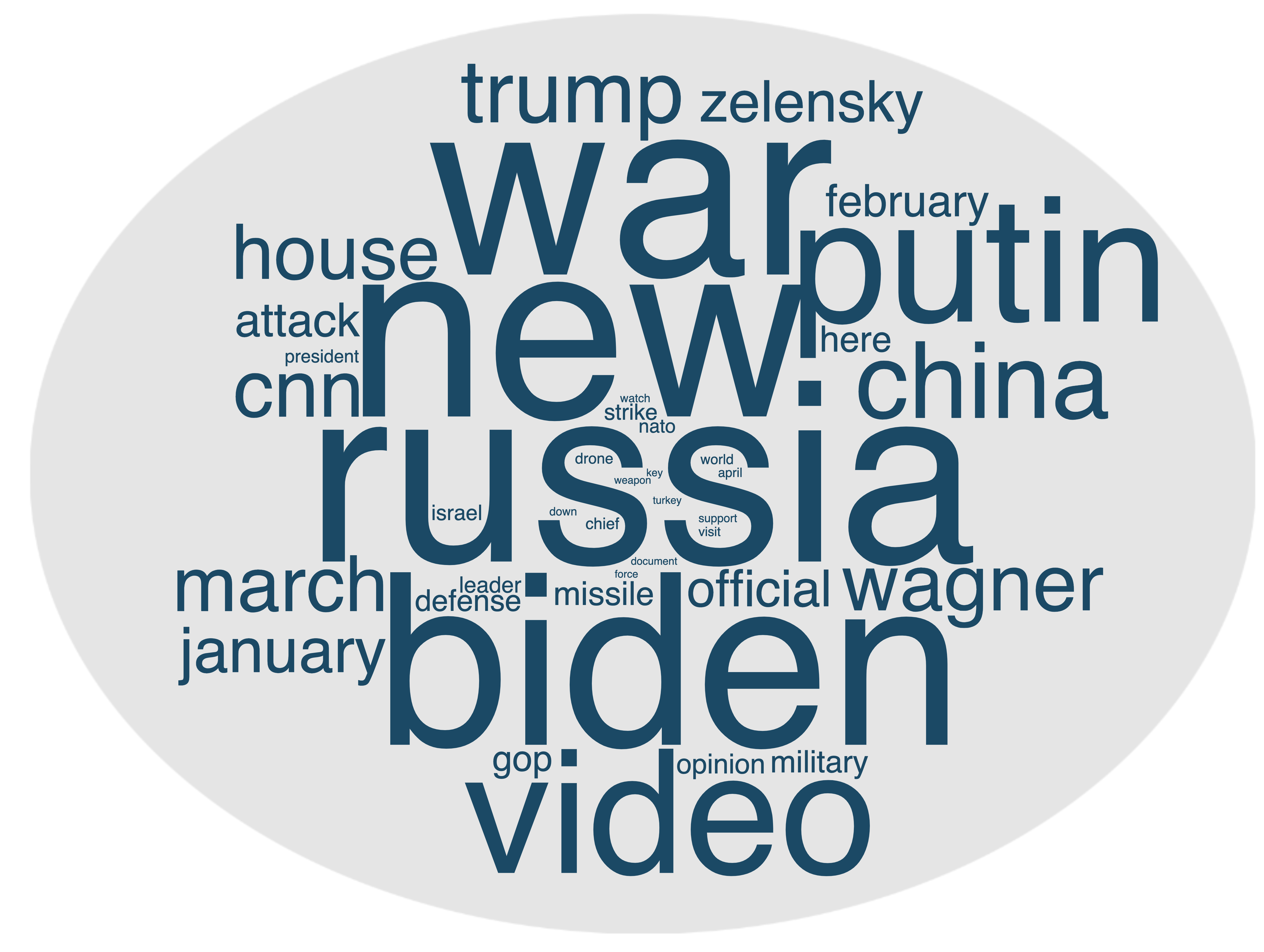The American national press represents a much more fragmented array of sources than television network news, and therefore, when considered as an entire medium, it may have much more breadth in stories and pursued narratives. Individuals oftentimes with strong identities in their political party will consume media that confirms rather than challenges the narratives embraced by their political party. As a result, the American press features a broad spectrum of political bias from the extreme left to the extreme right. To understand the media diet of individuals belonging to differing political parties, we examine two sets of content, one pulled from news sources that are most often tweeted by registered Democrats and one pulled from news sources that are most often tweeted by registered Republicans.
The graphs below analyze stories published by two different sets of media outlets, media sources whose stories are most tweeted by registred Democrats (blue) and media sources whose stories are most tweeted by registered Republicans (red). We took all stories published by these two groups and cataloged how many stories per day included references of "Ukraine" (top graph) and how many stories per day included references of "Ukraine" with close mentions of "corrupt" or "corruption." Taking this subset of stories referencing "Ukraine," we then analyze which of the two groups contained a higher share of content referencing "Ukraine" every day in 2023. The graph represents all published stories from these two groups of media outlets referencing "Ukraine" and then plots them against each other depicting which set of outlets had a higher share of content referencing "Ukraine" in comparison to the other set of outlets.
Key Takeaways
Throughout 2023, both sets of media sources published roughly the same proportional amount of content referencing "Ukraine."
However, media sources in 2023 most often tweeted by Republican voters published approximately 11% more content about Ukraine including close mentions of "corrupt" or "corruption" than media sources most often tweeted by Democratic voters.
How to Interpret These Charts
The top chart measures frequency of usage of "Ukraine." The bottom chart measures frequency of usage of "corrupt" or "corruption" in stories that use "Ukraine."
The chart plots the share of stories referencing "Ukraine" from each group against the other.
The horizontal 50% line indicates an even split between the two groups. Therefore, if red is above the line, it means that group has a higher share of stories regarding Ukraine on that day compared to blue.
If the graph were to be split with half red and half blue, it would demonstrate that each group published the same relative share of stories regarding Ukraine on that day.
The graph does not measure absolute values, only relative ones. Therefore, if both groups published 3% of their stories about Ukraine on a given day, this would read as a 50/50 split. If both groups published 10% of their stories about Ukraine on a given day, this would also read as a 50/50 split.
How to Interpret the Word Clouds
The word clouds below visualize the frequency of use for each word mentioned within a three-minute timeframe of the term "Ukraine" being mentioned.
The visualization is based on data collected over the year 2023 for the two major US-based TV networks: Fox News and CNN.
The frequency of use is depicted by the size: the bigger a particular term is in the cloud then the more frequently it was used in conjunction with the term "Ukraine."
Similarly, the smaller a particular term is in the cloud then the less frequently it was used in conjunction with the term "Ukraine."
Key Takeaways
In 2023, both FOX News and CNN used the terms "Biden" and "Russia" with similar frequency.
After October 7, 2023, Fox News frequently covered Ukraine in conjunction with Israel. It often brough border protection issues into the discussion surrounding Ukraine, as well as Hunter Biden, military, and security. It also covered Russia's nuclear threats a lot more extensively than CNN.
Unlike Fox News, CNN did not shy away from the term "war" and mentioned Putin a lot more frequently. It tended to cover Ukraine in conjunction with Israel less often, focusing more on Wagner group and China.
Fox News and CNN discuss Ukraine in very different ways
Fox News

CNN


